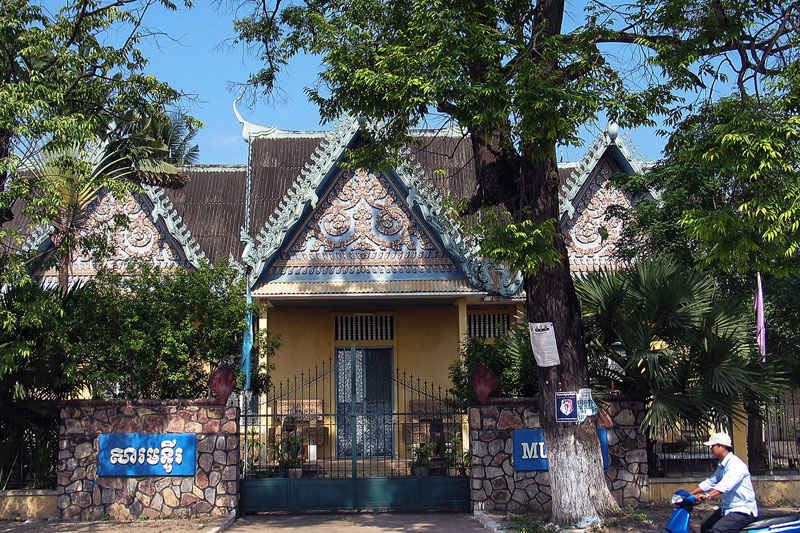BATTAMBANG CITY – Just across the street from the Sangke River in the heart of this northern city, a small building of traditional Khmer style stands in the shade of tall trees.
The Battambang Provincial Museum is the country’s second most important government museum after the National Museum in Phnom Penh, the Angkor National Museum in Siem Reap City being a partially privatized institution.

But with its staff of five—which includes the director, clerks and those who keep the rooms and grounds clean—the museum has been in dire need of an upgrade for a long time.
In a few months, however, a major project will be launched to not only restore the building, but also to redesign its displays and develop new public programs.
Devised by the Ministry of Culture, the plans envision the Battambang museum as a model for the development of future museums and the training of museum staff across the country, said Kong Vireak, director of the ministry’s museum department and director of the National Museum.
“We have to think of collection management, curating…the actual practice of museology, which includes museum marketing and community participation,” he said.
Another aim of the project is to make the museum part of the local government’s efforts to see Battambang City awarded World Heritage status. The museum, both as an institution and a historic building, could bring its host city closer to that goal, Mr. Vireak said.

The Culture Ministry will also work with Friends of Khmer Culture (FOKCI), an organization that supports conservation and training programs at the National Museum and several archeological sites.
“We are convinced of the great importance of the collection and are keen to help the Ministry in its efforts to make improvements to the physical plant and also to the displays, storage, conservation facilities and educational opportunities,” Helen Jessup, the organization’s president, said in an email.
The ministry and FOKCI have agreed that the ministry will handle building restorations—which will cost an estimated $50,000—while FOKCI will develop and implement a full museum program, from display design and staff training to community outreach, Mr. Vireak said.
Among other priorities, the museum’s floorplan needs to be rethought. It may include a section on prehistoric sites found in the region, as well as a children’s corner, he said.
The Battambang museum was opened in the mid-1960s, said Kim Sophorn, an archeologist and the museum director. Storage space was added in 1997 and two wings built in 2010. And its collection of 1,000 or so artifacts continues to expand as people in the region regularly report objects they find, the result of the museum’s outreach program.
On May 25, museum staff brought in a massive stone pedestal on which are sculpted a hand and crossed legs that likely supported a statue of the Buddha, Mr. Sophorn said.
“They found it at the foot of Banan Mountain” on the outskirts of Battambang City, he said. “An old pagoda called Wat Chas used to be there…. I’m now trying to find other pieces of the statue.”
Such new acquisitions make it imperative to redesign the museum so that they are displayed according to historical period and visitors can better enjoy their visits, Mr. Sophorn added.
If all goes according to plan, the ministry’s building restoration and FOKCI’s museology program will start early next year, Mr. Vireak said.
And resources permitting, he added, upgrades could also extend to Battambang City’s second museum.
Opened in 1965, the Wat Po Veal Museum has a collection of Khmer antiquities that were amassed by a former chief monk. When last inventoried, the pagoda museum held 218 stone artifacts and 65 wooden ones, Mr. Sophorn said.
Currently closed to the public, Wat Po Veal would have to be set up with the usual amenities of a public museum, Mr. Vireak said. “We don’t want to move the collection to another location,” he said.
“In the past, Wat Po Veal Museum had a reputation in the country and abroad. We now want to retain that reputation, organize the museum with proper museum management and also help the pagoda generate some income to support it.”



